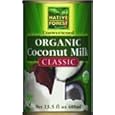At baby showers, it is not uncommon for the expectant mom or set of parents to receive a goody basket full of baby ibuprofen or tylenol, diaper rash cream, gas drops or nursing cream. In fact, I received all of these things and have at one point or another tried all of them, and was happy to not have to run out to the drugstore to grab them on a rainy night.
There are times though when the conventional treatments don't *work* or fix the problem like I would've liked, and thanks to a few friends, I have learned some different ways to treat certain ailments that may afflict your little one or other family members!
If I were to make my own all-natural/homeopathic goody bag for an expectant parent, here is what I would include, and why:
Aconite Flower, c/o Wikipedia |
- Aconitum Napellus, aka "Aconite," is a homeopathic treatment that I buy in the little blue Boiron tubes at my local healthfood store and always try to keep it in stock because according to B.B.H., it's the best thing to give at the onset of any illness. Cold, fever, sore throat, vomiting, etc., if given within the first 12 hours it can really lessen or reduce the impact of the symptoms.
- Hepar Sulphuris Calcareum. This is a great homeopathic treatment for the croup cough that is common in children under 5. Aside from using hepar sulph, we'll use a humidifier in the room, and try to get as much rest as possible. Using tea tree oil, lavender and the other essential oils on the hands or feet can help with croup, but try not to use both treatments at the same time. Oils are powerful and can sometimes overpower the homeopathic treatment.
- Chamomilla tablets are great for a teething baby; it's essentially the same herb in teething tablets you can buy at any drugstore or Target. Sometimes we give Mia chamomilla when she's freaking out for no apparent reason; it's great for reducing agitation and fear in an unsettled child. When a child is older, you could also try real chamomile tea.
- Coldcalm can be used for cold and flu and similar to Zicam, is best when taken immediately and with greater frequency at the onset. It is analogous to a conventional cold medication you'd buy at your pharmacy, treating a whole host of symptoms with various homeopathic ingredients.
- Black Elderberry Syrup (technically I would keep this in my refrigerator upon opening) is wonderful for that persistent cough or reducing the duration of the flu. One day when Mia was hacking in church services, a family friend came up and just said, "Black Elderberry Syrup, that's what you need for Mia." We quickly picked some up on our way home and Mia's cough was gone within days. Some studies have even shown that it can reduce your flu by 4 days! It was also shown to be 99% effective against the Avian Bird Flu. Black Elderberry, c/o Gaia Herbs
What I love about these remedies is that they are proven over time and have a greater track record than many of your typical over the counter remedies. They have lasted over the years and stood the test of time, which gives me great comfort as a young mother treating a young child wondering, "Is this safe? Will this work? Am I hurting my child?"
Whenever we travel away from home for days at a a time, I will often pack Aconite and Hepar Sulph in my bag, because it seems Mia always comes down with something when we're away from home (stress, fatigue, less rest usually accompany our travels!). It's nice to know we have a quick way to treat the symptoms before they blow up into something worse.
So the next time you're thinking about natural remedies for common ailments in your family, know that you can rely on many of the herbs and plants God has provided us on this earth!
Happy homeopathy!
Disclaimer: Of course, I am not a medical doctor or a doctor of natural medicine, so if you have any concerns about you or your child's physical health before taking these remedies, please consult with a DOM, DNM or someone experienced in homeopathy. There can be contraindications with herbs as well, i.e., if you are on prescription medication, nursing or pregnant. /Concluding the "don't sue me" spiel.
This post was also shared at Chiquita Bambina & on Monday Mania.







